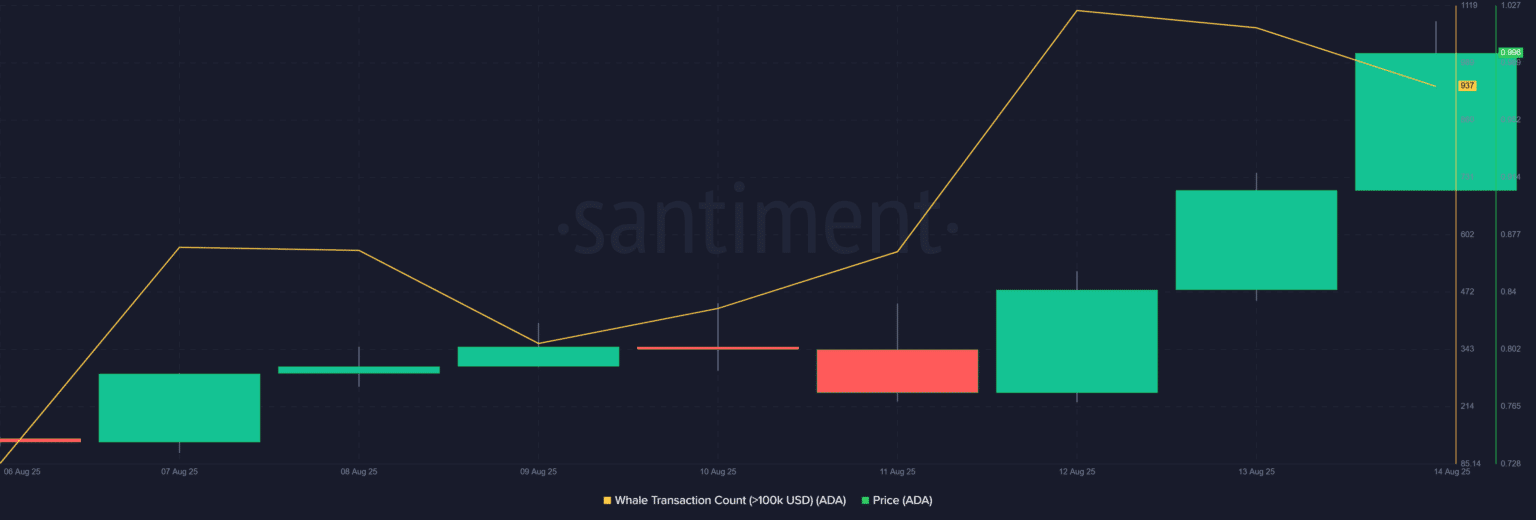After 5 months of sluggish activity, Cardano (ADA) finally surpassed the resistance level of $0.90 on the third attempt. The discussion volume on social platforms also surged to over 20,000, indicating renewed interest from traders.
Technically, the upward momentum has not fully exploded yet, leaving room for buying pressure in the spot market before reaching the next supply cluster. At the same time, Grayscale's filing for an ADA spot ETF is helping on-chain signals and market sentiment align positively.
Whale activity is also heating up: transactions over $100,000 have increased from 86 to over 1,000 in a week, signaling strong accumulation.
This development could create short-term liquidity squeezes, explaining ADA's increase of over 30% in the past week.

Overall, ADA shows clear strength signals.
This altcoin is showing superior gains compared to Bitcoin (BTC) and other L1 blockchains. An increase of over 15% in the last 24 hours, reflected on both daily and monthly timeframes, suggests a capital shift towards altcoins, especially as the ADA/BTC ratio reaches a 5-month high.
The combination of whale capital flow, increased discussion volume on social platforms, and positive price momentum is paving the way for a liquidity test at the $1 mark. The question is: is this a real breakout or just a short-term increase before weakening?
Cardano once had activity that exceeded all expectations
Looking more broadly, ADA has risen 71% in the last quarter—only lower than Ethereum's (ETH) increase of over 90%—while outperforming Solana (SOL) by more than 50%, showing relatively outstanding strength in the Layer-1 group.
However, the price has yet to break through the supply cluster around the $1 mark. Will the third test create a breakout? On-chain cash flow and liquidity accumulation in the derivatives market suggest the potential for a short-term liquidity squeeze.
Surprisingly, Cardano's open interest (OI) has risen over 25%, reaching $1.88 billion in just the last 24 hours.
This figure is five times the growth rate of the largest altcoin, currently at 4.35%, indicating high leverage and crowded trading positions.

In other words, ADA's upward trend seems to be driven more by leveraged capital than by buying demand in the spot market.
Although discussion volume on social platforms and whale capital flow have surged as the market shifts to a 'risk-on' state, the number of whale transactions has decreased to 937, indicating early profit-taking signs.
This creates a volatility trap: two dense liquidity clusters below the current spot price may trigger a cascade effect, making the third breakout attempt from ADA's accumulation zone technically challenging.
